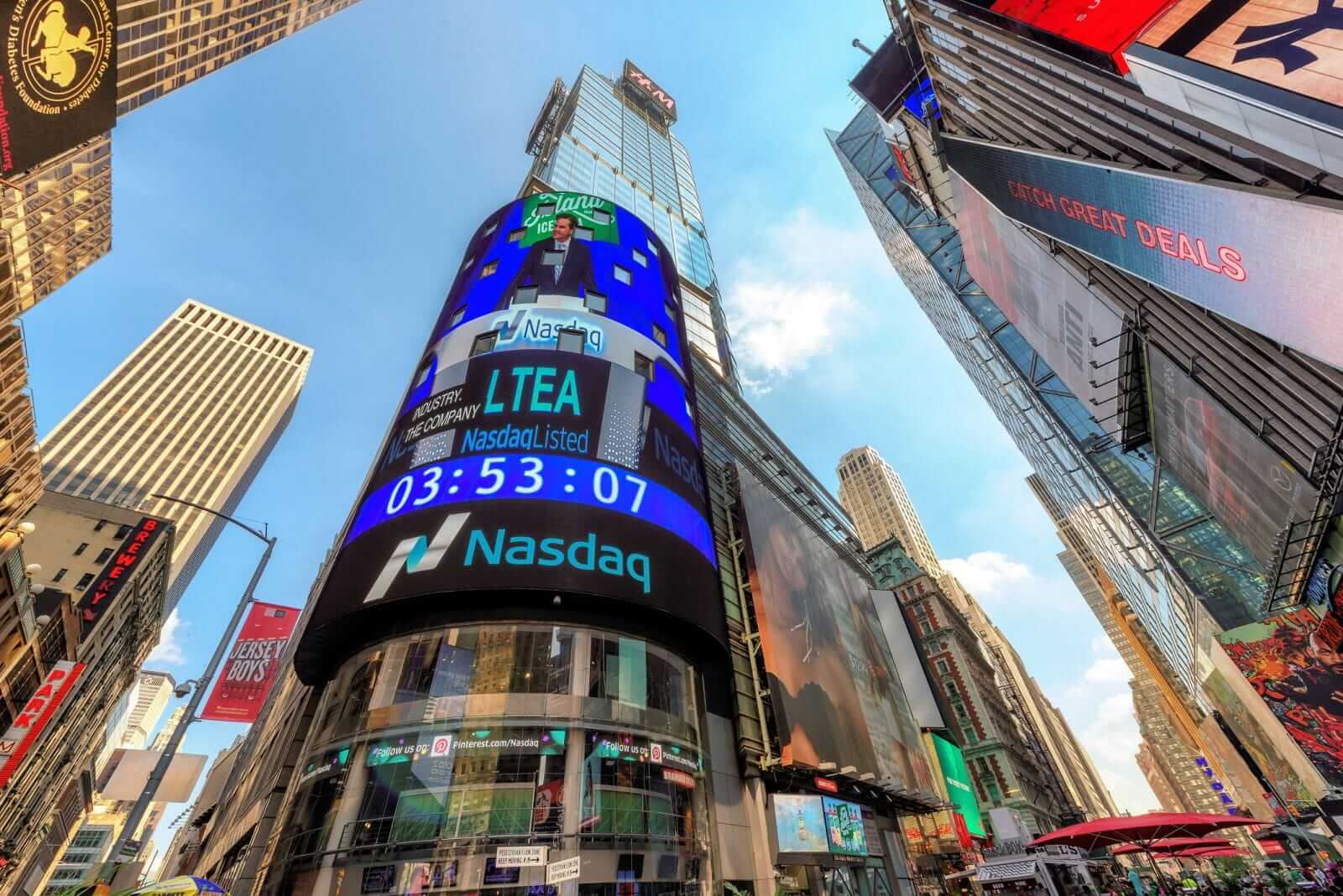
The S&P 500 Index ($SPX) (SPY) Tuesday closed up +0.38%, the Dow Jones Industrials Index ($DOWI) (DIA) closed down -0.03%, and the Nasdaq 100 Index ($IUXX) (QQQ) closed up +0.82%. June E-mini S&P futures (ESM25) are up +0.38%, and June E-mini Nasdaq futures (NQM25) are up +0.81%.
Stock indexes recovered from early losses on Tuesday and finished higher mainly due to the strength of the Magnificent Seven stocks. Stocks on Tuesday initially opened lower ahead of Wednesday's announcement of new US tariffs. President Trump will announce the details of the reciprocal tariffs on Wednesday at 3 pm EST, and they will take immediate effect, according to a White House spokesperson.
Stocks were also weighed down by a report Tuesday from the Washington Post that said the reciprocal tariffs that President Trump is considering will be around 20% on most imports to the US. The tariff worries have fueled risk-off sentiment in asset markets and sparked safe-haven buying of government debt and gold, with the 10-year T-note yield falling to a 4-week low Tuesday and the price of gold climbing to a new record high.
US economic news Tuesday bolstered stagflation concerns and were bearish for stocks. US Feb JOLTS job openings fell more than expected, and the US Mar ISM manufacturing index fell to a 4-month low. Also, inflation concerns drew attention after the Mar ISM prices paid sub-index rose at the fastest pace in 2-3/4 years.
The US Feb JOLTS job openings fell -194,000 to 7.568 million, weaker than expectations of 7.658 million.
The US Mar ISM manufacturing index fell -1.3 to a 4-month low of 49.0, weaker than expectations of 49.5. The Mar ISM prices paid sub-index rose +7.0 to a 2-3/4 year high of 69.4, stronger than expectations of 64.6.
US Feb construction spending rose +0.7% m/m, stronger than expectations of +0.3% m/m.
Stocks have been under pressure over the past four weeks due to fears that US tariffs will weaken economic growth and corporate earnings. On March 4, President Trump imposed 25% tariffs on Canadian and Mexican goods and doubled the tariff on Chinese goods to 20% from 10%. On March 8, Mr. Trump reiterated that he would impose reciprocal tariffs and additional sector-specific tariffs on foreign nations on April 2. Last Wednesday, President Trump signed a proclamation to implement a 25% tariff on US auto imports, effective April 3. The tariffs will initially target vehicles fully assembled outside the US and, by May 3, will expand to include automobile parts made outside the US. Mr. Trump said the tariffs were "permanent," and he was not interested in negotiating any exceptions.
Market attention this week will include Wednesday's March ADP employment change (expected to climb by +120,000). On Thursday, the March ISM services index is expected to fall -0.5 to 53.0, and on Friday, March nonfarm payrolls are expected to increase by +138,000, and the March unemployment rate is expected unchanged at 4.1%. Also, March average hourly earnings are expected +0.3% m/m and +4.0% y/y, unchanged from February. Finally, on Friday, Fed Chair Powell is scheduled to speak to the Society for Advancing Business Editing and Writing Conference on the economic outlook.
The markets are discounting the chances at 21% for a -25 bp rate cut after the May 6-7 FOMC meeting.
Overseas stock markets on Tuesday settled higher. The Euro Stoxx 50 closed up +1.37%. China's Shanghai Composite Index closed up +0.38%. Japan's Nikkei Stock 225 recovered from a 6-1/2 month low and closed up +0.02%.
Interest Rates
June 10-year T-notes (ZNM25) Tuesday closed up +18 ticks. The 10-year T-note yield fell -5.0 bp to 4.159%. June T-notes Tuesday climbed to a 4-week high, and the 10-year T-note yield dropped to a 4-week low of 4.131%. T-notes are rallying on the idea that US tariffs might drive the economy into recession, prompting the Fed to continue cutting interest rates. Falling inflation expectations were bullish for T-notes after Tuesday's 10-year breakeven inflation rate fell to a 1-week low of 2.332%. T-notes also have carryover support from Tuesday's strength in European government bonds. T-notes extended their gains Tuesday after the US Feb JOLTS job openings fell more than expected, and the US Mar ISM manufacturing index contracted at the steepest pace in 4 months.
European bond yields Tuesday moved lower. The 10-year German bund yield fell to a 3-1/2 week low of 2.656% and finished down -5.1 bp to 2.687%. The 10-year UK gilt yield fell to a 1-1/2 week low of 4.601% and finished down -4.1 bp to 4.634%.
The Eurozone Mar S&P manufacturing PMI was revised downward by -0.1 to 48.6 from the previously reported 48.7.
The Eurozone March CPI rose +2.2% y/y, right on expectations and the slowest pace of increase in 5 months. The March core CPI rose +2.4% y/y, weaker than expectations of +2.5% y/y and the smallest increase in 3 years.
The Eurozone Feb unemployment rate unexpectedly fell -0.1 to a record low of 6.1%, showing a stronger labor market than expectations of no change at 6.2%.
Swaps are discounting the chances at 77% for a -25 bp rate cut by the ECB at the April 17 policy meeting.
US Stock Movers
Strength in the Magnificent Seven stocks Tuesday was supportive of the overall market. Tesla (TSLA) closed up more than +3% after Wells Fargo Securities added the stock to its Q2 Tactical Ideas list. Also, Alphabet (GOOGL), Meta Platforms (META), Microsoft (MSFT), Amazon.com (AMZN), and Nvidia (NVDA) closed up more than +1%. In addition, Apple (AAPL) closed up +0.48%.
Clothing companies Ralph Lauren (RL) and Tapestry (TPR) closed up more than +3% after peer PVH Corp (PVH) surged more than +17% after forecasting stronger-than-expected guidance for 2026 EPS.
CyberArk (CYBR) and Crowdstrike (CRWD) closed up more than +2% to lead cybersecurity stocks higher after Stephens initiated coverage on the stocks to overweight.
Airline stocks fell on Tuesday on downgrades. Southwest Airlines (LUV) closed down more than -6% after Jeffries downgraded the stock to underperform from hold with a price target of $28. Also, Delta Air Lines (DAL) and American Airlines Group (AAL) closed down more than -2% after Jeffries downgraded the stocks to hold from buy. In addition, United Airlines Holdings (UAL) and Alaska Air Group (ALK) closed down more than -1%.
Chip makers retreated Tuesday and weighed on the broader market. Intel (INTC) closed down more than -3%, and GlobalFoundries (GFS) and ON Semiconductor (ON) closed down more than -2%. Also, Texas Instruments (TXN) and Analog Devices (ADI) closed down more than -1%.
Johnson & Johnson (JNJ) closed down more than -7% to lead losers in the S&P 500 and Dow Jones Industrials after a federal judge rejected the company's third attempt to use bankruptcy of one of its units to end baby powder cancer claims.
Moderna (MRNA) closed down more than -3% Tuesday and added to Monday's -8% plunge to lead vaccine makers lower after Peter Marks, a top FDA regulator overseeing approvals and vaccines and biological drugs, resigned.
Pharmaceutical makers were under pressure Tuesday after Robert F. Kennedy Jr, Secretary of Health and Human Services, ousted top officials at the Department of Health and Human Services, including those overseeing drug approvals. As a result, Biogen (BIIB) and Pfizer (PFE) closed down more than -3%. Also, Merck & Co (MRK), Eli Lilly & Co (LLY), Bristol-Myers Squibb (BMY), and Regeneron Pharmaceuticals (REGN) closed down more than -2%.
First Watch Restaurant Group (FWRG) closed up more than +7% after Cowen upgraded the stock to buy from hold with a price target of $22.
Keurig Dr Pepper (KDP) closed up more than +2% after Morgan Stanley upgraded the stock to overweight from equal weight with a price target of $40.
Ulta Beauty (ULTA) closed up more than +2% after Goldman Sachs upgraded the stock to buy from neutral with a price target of $423.
Shake Shack (SHAK) closed up more than +2% after Loop Capital Markets upgraded the stock to buy from hold with a price target of $127.
Earnings Reports (4/2/2025)
AngioDynamics Inc (ANGO), Franklin Covey Co (FC), Penguin Solutions Inc (PENG), Resources Connection Inc (RGP), RH (RH), UniFirst Corp/MA (UNF).
On the date of publication, Rich Asplund did not have (either directly or indirectly) positions in any of the securities mentioned in this article. All information and data in this article is solely for informational purposes. For more information please view the Barchart Disclosure Policy here.






